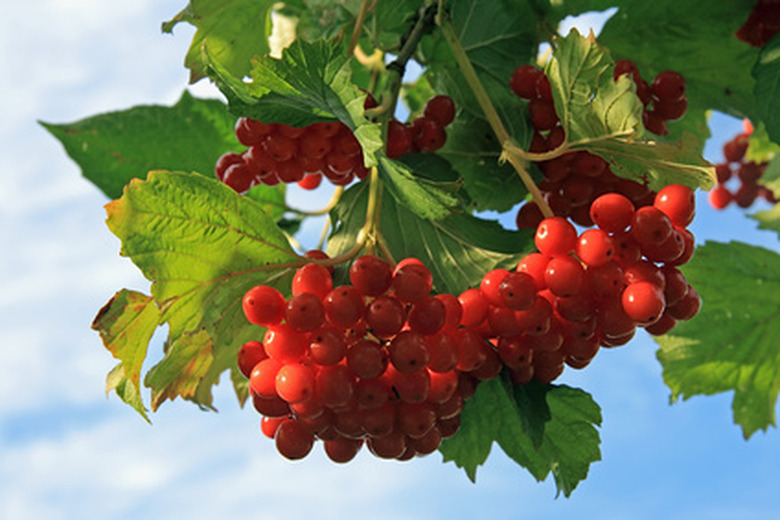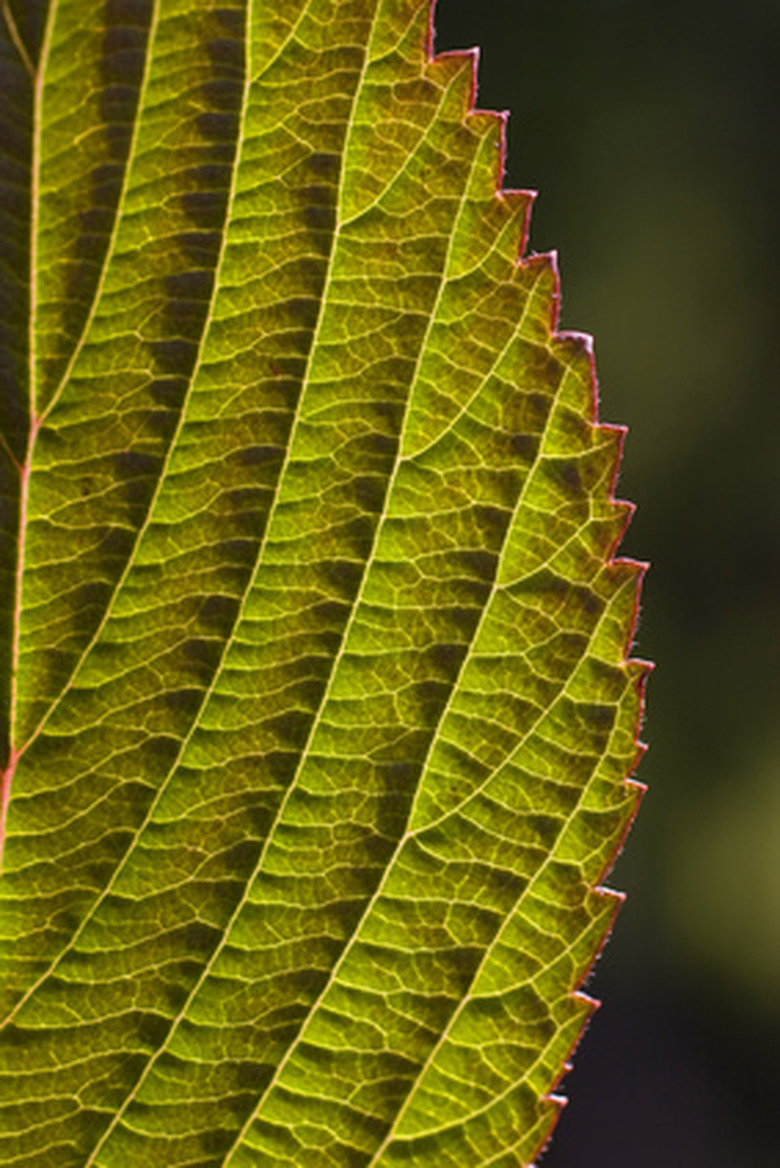How To Identify Viburnum
There are several types of viburnums–some with fruit, some with a clove-like aroma, and some with vibrant fall color. The colorful viburnum attracts wildlife to gardens during the fall and winter. One of the more common viburnum is the swamp-haw viburnum. It grows near stream banks from Florida to Long Island, and can be grown in the yard with partial shade to full sun.
Step 1
Look at the leaves of the plant. The viburnum has shiny, green leaves that grow in a dense, uniformed pattern on the plant, forming a domed shape. The leaves grow in pairs, side by side on the branches. The leaves are lobed.
- There are several types of viburnums–some with fruit, some with a clove-like aroma, and some with vibrant fall color.
- The viburnum has shiny, green leaves that grow in a dense, uniformed pattern on the plant, forming a domed shape.
Step 2
Check for white flowers in late June. The clusters of flowers are, depending on the cultivar, 2 to 6 inches across. Each individual flower grows up to ¼ inch wide. The white flowers give way to clusters of round drupes. The drupes (fleshy outside, surrounding a hard inside) start out green, then change to white, then pink, then bluish black by late summer. Each fruit contains one seed.
Step 3
Look at the foliage during the fall. In the fall, the viburnum's foliage changes to reddish-purple. If the cultivar is "winterthur," the fall colors are brighter red than other viburnum plants.
- Check for white flowers in late June.
- In the fall, the viburnum's foliage changes to reddish-purple.
Step 4
Check for other cultivars: Some cultivars provide layered leaves and clusters of red fruit. Some cultivars produce creamy-colored blossoms, instead of white blossoms. Most viburnum grows up to 12 feet tall, but is still considered a shrub, not a tree. Some cultivars, such as the blue muffin, are more compact and are better for landscaping borders.
Viburnum Varieties
The clusters of flowers on many viburnum varieties are eye-catching. These varieties are both deciduous. Leatherleaf viburnum (Viburnum rhytidophyllum) has large clusters of yellowish-white flowers. Viburnum burkwoodii, typically an evergreen except in extremely cold climates, has dense clusters of fragrant pink blossoms, which flower near the end of winter or beginning of spring. While viburnum fruits aren't edible, they can be ornamental. Swamp Haw (Viburnum nudum), also deciduous, grows green, egg-shaped fruits that turn a creamy pink hue, then become deeper pink in summer and bluish-black in fall. European Cranberry Bush (Viburnum opolus) develops colorful foliage that ranges from yellow to bright red. Viburnum japonicum, an evergreen with sparse fruit and flowers, can be trained to grow as a small tree that reaches 10 to 15 feet tall.
- Check for other cultivars: Some cultivars provide layered leaves and clusters of red fruit.
- European Cranberry Bush (Viburnum opolus) develops colorful foliage that ranges from yellow to bright red.
References
- Brooklyn Botanic Garden: Viburnum
- Sunset Western Garden Book; Sunset Publishing Company
- Fine Gardening: Viburnum Dentatum
- Fine Gardening: Genus Viburnum

